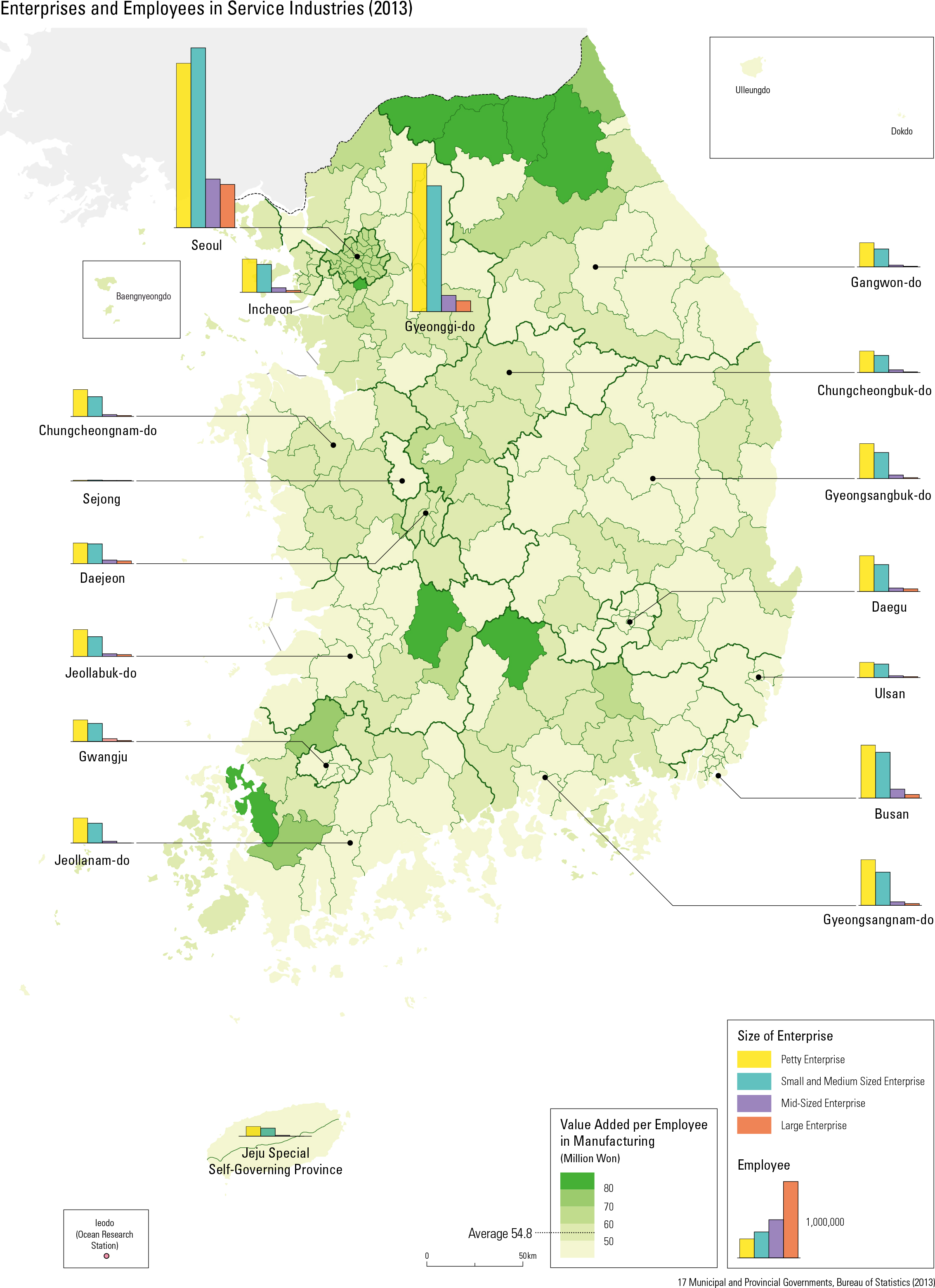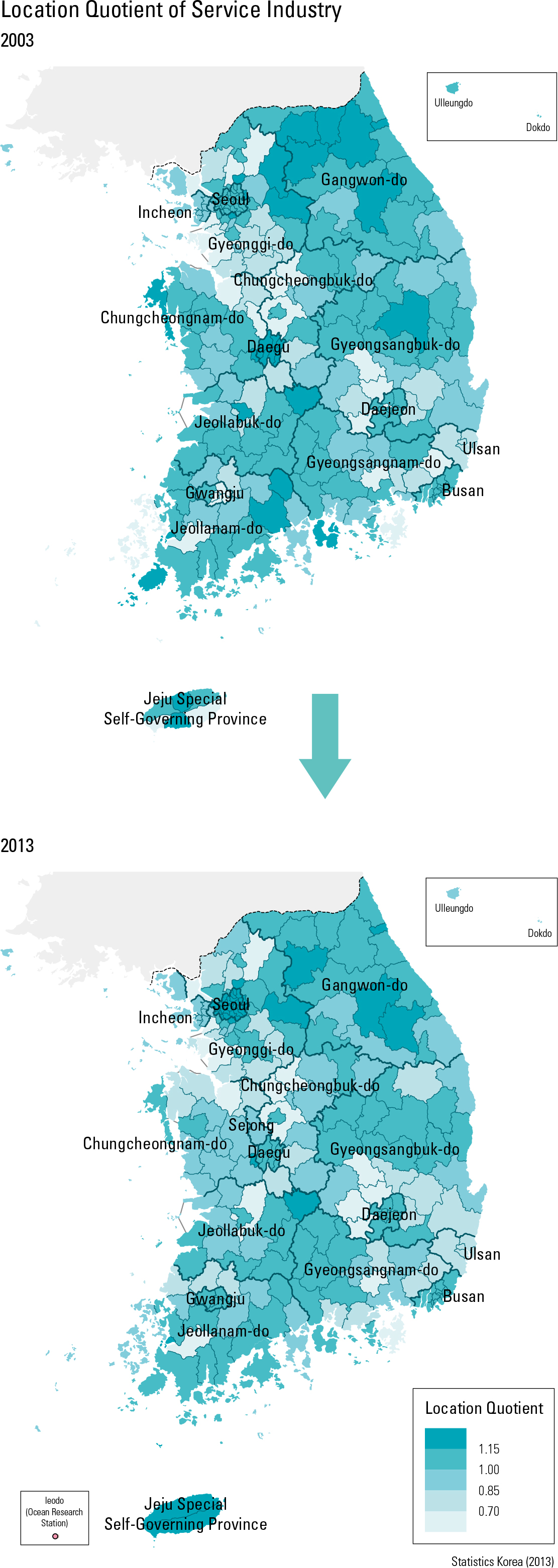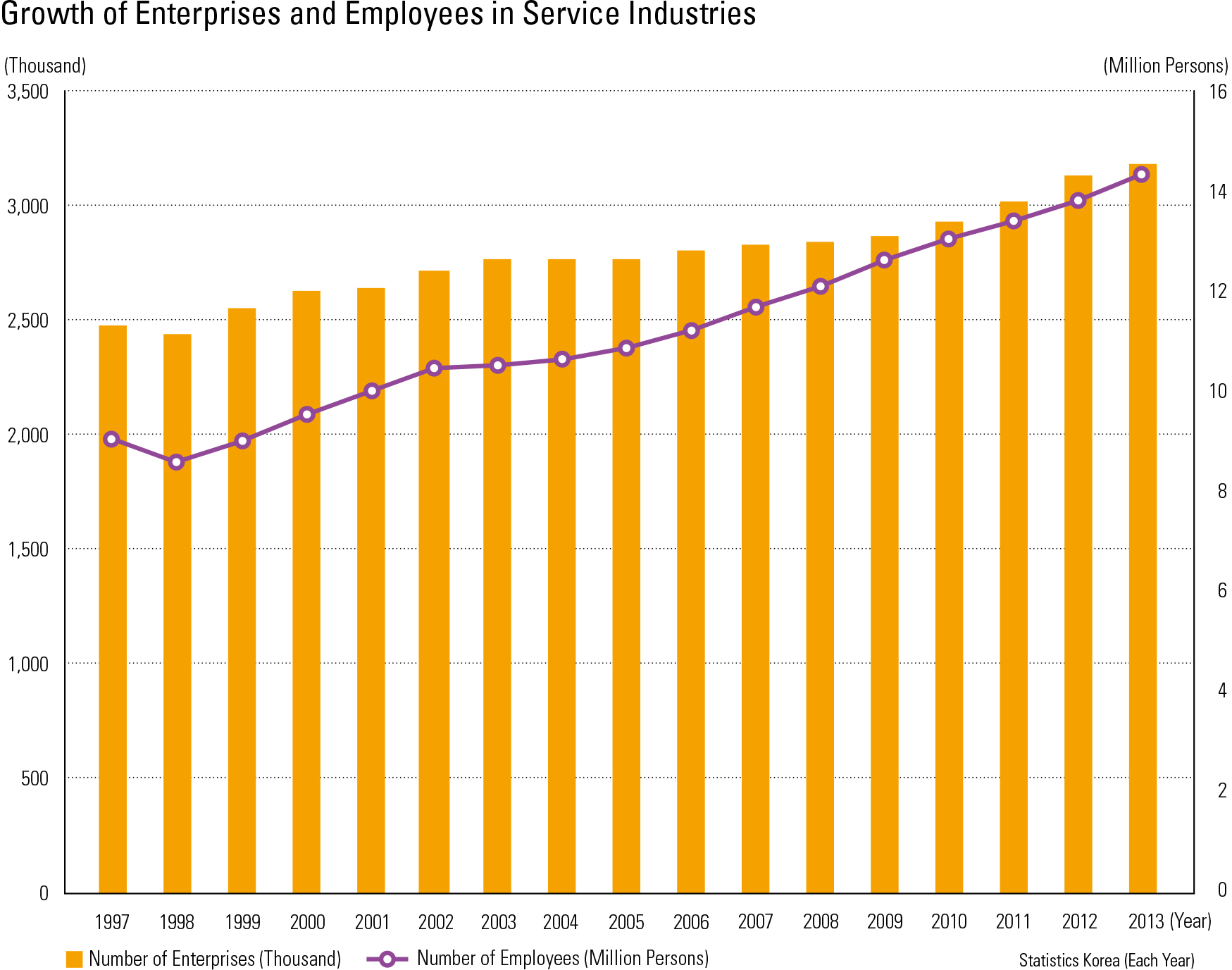English III
Today the service industry is a dominant indus- try in Korea. Traditionally the Korean industrial structure was centered on primary industries; however, since the 1960s when the ve-year eco- nomic plans were initiated by the government-led industrialization policy, the manufacturing sector has accelerated. The rapidly growing trend for manufacturing industries eventually reached its peak in the 1990s and started to slow down. On the other hand, service industries have continued to grow until today. In 2013, the number of ser- vice industry business establishments had reached 3.2 million and accounted for 86.6% of the total number of industrial establishments. There were 14.2 million service workers, 74.1% of the total number of employees. The total sales for service industries were about 2 trillion US dollars, 51.2 % of the total industrial sales. The service industry has continued its steady growth annually, with the exception of the economic crisis of 1997. When comparing service industry employment among the greater metropolitan areas and prov- inces, the number of service employees in Seoul is 3.93 million, or 28.7% of the total number of service employees. Gyeonggi-do had 2.73 mil- lion (19.9%) and Busan had 0.99 million (7.2%). About half of the service workers were concen- trated in the Greater Seoul Metropolitan Area (Seoul and Gyeonggi-do), which is similar to the geographic distribution of the population. The average number of employees per service establishment in 2013 was 4.5 persons, indicating that small businesses are dominating. In terms of the number of employees by the size of estab- lishment, small businesses with fewer than 10 employees accounted for about half, or 46.9%, establishments with 10-299 employees accounted for 41.1 %, indicating that most service establish- ments are small- and medium-sized businesses.
page_2 |


